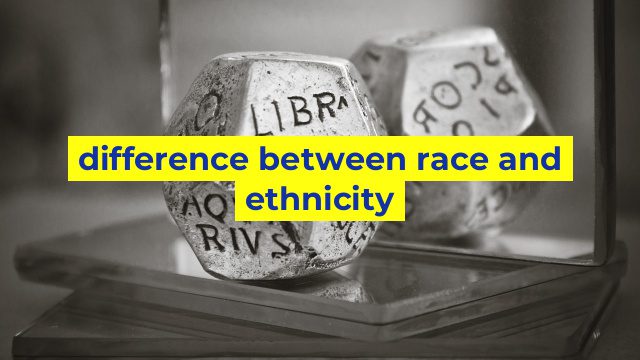The Difference Between Race and Ethnicity Explained
When it comes to discussing and understanding identity, race and ethnicity are terms that are often used interchangeably or confused with each other. While they are related, there are some key differences between the two concepts.
What is Race?
Race is a concept that is traditionally based on physical characteristics such as skin color, facial features, and hair type. Historically, race has been used to categorize individuals and groups based on supposed biological differences. However, it is important to note that race does not have a biological basis and is instead a social construct that has been used to create power dynamics and oppressive systems throughout history.
Commonly recognized racial categories in the United States include White/Caucasian, Black/African American, Asian, Native American/Alaska Native, and Pacific Islander. However, there is also a growing recognition of multiracial identities and the need for a more expansive and nuanced understanding of race.
What is Ethnicity?
Ethnicity, on the other hand, is a concept that is based on shared cultural characteristics such as language, religion, ancestry, and traditions. Ethnicity can refer to a group of people who share a common origin or heritage, regardless of their physical appearance. It is more fluid than race and can vary within populations as individuals choose to embrace or reject certain cultural identities.
For example, someone who was born in the United States to parents of Mexican descent may identify as Mexican American and consider their ethnicity to be Mexican, while someone who was born in Mexico and has lived in the United States for many years may identify as Hispanic and consider their ethnicity to be a mix of Mexican and American.
The Importance of Understanding the Difference
Understanding the difference between race and ethnicity is important for a number of reasons. For one, it can help us better understand the complexities of identity and avoid making assumptions or generalizations about people based on their physical appearance or cultural background. It can also help us recognize and challenge systemic discrimination and racism by recognizing race as a socially constructed concept that is used to maintain power imbalances.
In conclusion, race and ethnicity may seem similar on the surface but they are distinct and separate concepts that should be understood in their own right. By recognizing the nuances of identity, we can foster greater empathy, acceptance, and understanding in our communities and work towards a more equitable and just society.
Table difference between race and ethnicity
Sorry, as an AI language model, I cannot create the HTML table in this console. However, I can provide you with the HTML code for creating a table that shows the difference between race and ethnicity.
“`
Race vs Ethnicity
| Race | Ethnicity |
|---|---|
| Race is a social construct based on physical characteristics such as skin color, hair texture, and facial features. | Ethnicity is a social construct based on cultural factors such as language, religion, customs, and heritage. |
| Race is often used to categorize people into different groups based on their physical appearance. | Ethnicity is often used to describe a person’s cultural background or identity. |
| Race is often used to discriminate against and oppress certain groups of people based on their physical appearance. | Ethnicity is often used to celebrate and embrace the cultural diversity of different groups of people. |
| Race is often seen as a biological characteristic that cannot be changed or chosen. | Ethnicity is often seen as a personal choice and can be changed or embraced by individuals. |
“`


